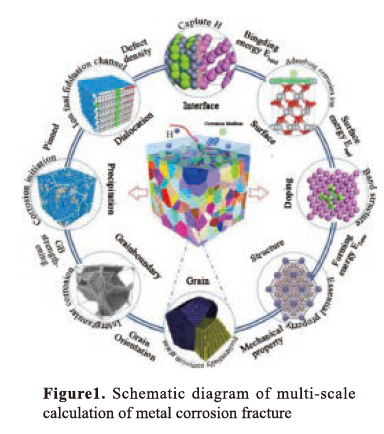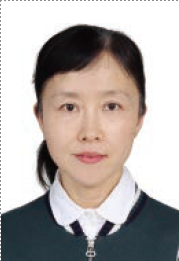Chaofang Dong1*, Yucheng Ji1, ChenyangYao1, Feng Ding1, Zhanghua Chen1
1Innovation Center for Materials Genome Engineering, Key Laboratory for Corrosion and Protection(MOE), Institute for Advanced Materials and Technology, University of Science and Technology Beijing, Beijing 100083, China
EXTENDED ABSTRACT: In recent years, some progress has been achieved in the research of integrated calculation of metal corrosion. This paper described how to combine first-principle calculation, molecular dynamics, near-field dynamics and finite element method to realize the multi-scale modeling and calculation of metals corrosion crack initiation, propagation and fracture and take the microscopic model and mechanism of Aluminum alloy and Magnesium alloy as an example. At the same time, the design, preparation and verification of a new kind of Aluminum alloy with resistant of stress corrosion cracking driven by computational data were carried out by using artificial intelligence technology. In the purpose of further promoting the application of integrated calculation of metal corrosion, it is quite necessary to carry out extensive cooperation and strengthen database construction.
Keywords: metal corrosion; multi-scale; modeling; integrated calculation.
[l]Yucheng Ji, Chaofang Dong. Carros. Sci., 183, (2021)
[2]Yucheng Ji, Chaofang Dong. npj Mater. Degrad., 6(1), (2022)


Dr. Chaofang Dong is a professor at the Institute for Advanced Materials and Technology (IAMT), Beijing Advanced Innovation Center for Materials Genome Engineering, University of Science and Technology Beijing. She is also the associate director of the National Materials Corrosion and Protection Data Center and the Key Laboratory of Corrosion and Protection of the Ministry of Education. Dr. Chaofang's research interests are focused on the study of metal corrosion and protection. Dr. Chaofang's cutting-edge research contributions include multiscale simulation, computation, and micro-mechanism analysis of corrosion. This allows for an understanding of the fundamentals of thermodynamics, diffusion, the electronic structure of the surface and their impacts on metal corrosion processes. Her main achievements are in the field of corrosion control mechanisms and its engineering applications This includes the development of a data-driven rational design strategy, and engineering a robust "simulation analysis- experimental validation- engineering demonstration" pathway for the development of corrosion-resistant metals.